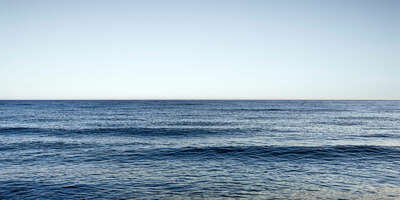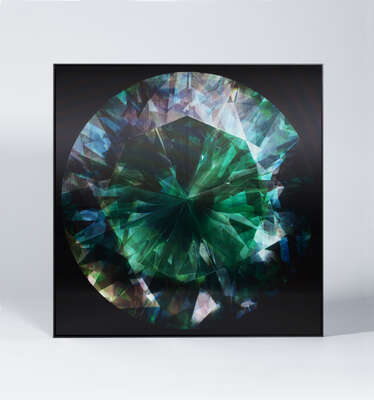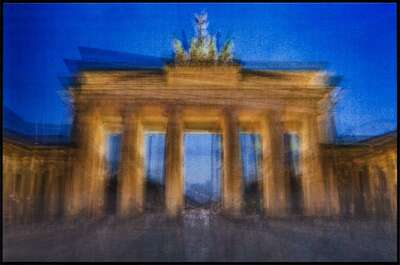
Multiphase Editions – The World in Motion
Beatrice Hug's abstract works seem to ebb and flow with a mind of their own. This pulsing effect is created by a combination of skillful color application and lenticular technology in the work itself. The longer you view the image, the more it seems to move. Step aside, and an even more direct change occurs: what was once pink turns green, and what was blue becomes red. This effect is made possible by Multiphase optics - very fine lenses on the surface of the artwork which refract light and reflect different images. The Paris-based artist has previously utilized mirrors, stained glass and dyed liquids in her captivating mediations on light and color. These Multiphase works are an exciting step in her ongoing process.


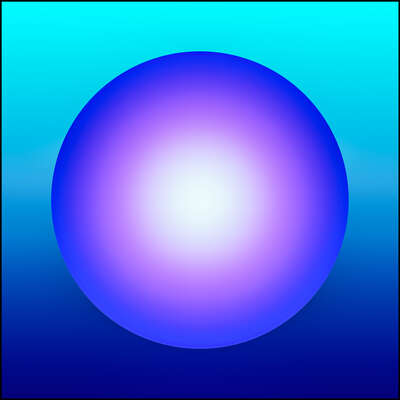





Gavin Evans' Multiphase portraits capture the unparalleled versatility that defined David Bowie's career. Utilizing lenticular technology, the artist depicts different sides of the iconic musician within the same artwork. Depending on the viewer’s vantage point, different expressions and images of Bowie come into view. The result is artwork that pays tribute to Bowie's own legendary talent for re-invention.


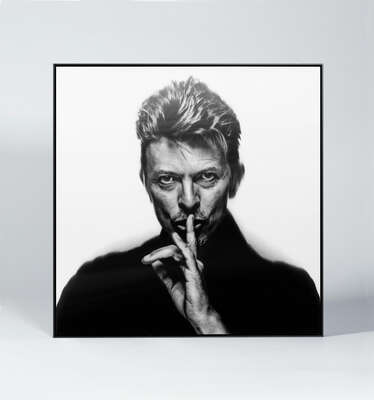







Loooop Studio convey the beauty of the natural world through a minimalist modern aesthetic. Their single-line drawings are brought to life by lenticular technology to create uniquely dynamic artworks. As the viewers perspective moves, so too do the neon pink lines across the black background. This then sets the flamingos into graceful motion. This trademark vibrancy has made Loooop Studio internationally renowned.








Wolfgang Uhlig is a modern master of maritime photography. Through his contemplative, minimalist seascapes, Uhlig conveys both the power and the stillness of the open ocean. His works invite the viewer to drift away, lost in thought. These Multiphase artworks complement Uhlig’s images by adding a subtle movement effect, thereby creating a transfixing viewing experience – one we don’t simply view, but actively partake in. These artworks bring to life the dynamic beauty of the ocean. The resulting scenes so immersive you can almost hear the waves and taste the salt in the air.
The German photographer Alfred Steffen keeps Prince’s legacy alive in his three-part portrait of the legendary artist. The Multiphase artwork is reminiscent of a stage, with each angle offering a new view of the star. The three constituent images arose from a photoshoot in which Steffen would ask Prince questions - “How big is your ego?” or “Do you believe in love?” for example - and the musician would mime the answers. Each image, therefore, is a direct expression of Prince’s personality.


The starting point in the creation of Holger Lippmann’s dazzling Multiphase artwork was a simple color wheel. Through a highly creative and complex algorithmic process, Lippmann gradually transformed the wheel into a stunning dance of color. Countless tiny prisms on the surface of the work refract and reflect the light around them. This reveals a new visible image from every angle. Individual tones are transformed into swathes of shimmering color, anchored within an intricate geometric structure. The wheel almost seems to rotate around itself.


Anton Sparx creates artworks known as "flip prints". The flip effect is a popular method of lenticular printing. In these works, the artwork's appearance alternates, or "flips" between two or more distinct images as the viewer's perspective moves. In his works, Sparx superimposes multiple digital paintings to create radiant Multiphase works of unparalleled depth. He uses this technique to create collages of the world's most iconic gemstones. This includes the champagne-colored Braganza Diamond and the famous Green Dresden.








Armand Dijcks' color photographs of the New York skyline feature brilliant usage of lenticular techniques. He uses it to showcase stunning transitions between day and night. Rather than traditional photography, which captures a moment frozen in time, Dijcks' ingenious panoramas depict the passing of time itself. As the viewers' eyes move across the work, nighttime fades into the first rays of sunshine, illuminating the Manhattan skyline. The interplay between the urban daylight scenes and the glowing nighttime skyscrapers reflects New York's restless dynamism, recalling its famous moniker - the city that never sleeps.






The photo artist Juan Fortes uses lenticular technology in his works to showcase the radiant beauty of exotic bird species. His portrait of an American Flamingo depicts several perspectives of bird, highlighting its graceful form and shimmering plumage. Elsewhere, his Multiphase photograph of the Australian Rainbow Lorikeet captures the bird in various stages of flight, embodying a sense of movement and grace whilst simultaneously revealing the ingenious mechanisms by which it travels. The harmonious dance of color and movement carries the viewer away on a journey to exotic locales.






More Multiphase Artworks:




















































































The Lenticular Technique
The process of creating Multiphase artworks is meticulous and highly sophisticated. First, the original motif is cut into countless strips and laminated on to a lenticular film. Next, thousands of minute optical lenses are lain over the original image in a grid-like arrangement. This creates a sense of depth. Further images are then printed directly onto the lenses, creating the "moving" effect Multiphase Art is famed for.



The optical effect of a Multiphase artwork also depends on the distance between the work and the viewer. As you approach a Multiphase work, the effect becomes more intense. 2D images suddenly spring to life, occupying the space between photograph and sculpture.
Multiphase Formats:
Flip

In flip prints, the artwork's appearance alternates, or "flips" between two or more distinct images as the viewer's perspective moves.
Morph

The morph technique causes the visible image to gradually change with no visible transitions, generating a sense of perpetual motion.
3D

In 3D Multiphase works, the individual elements of the image are displayed in layers - resulting in an immersive depth effect.


